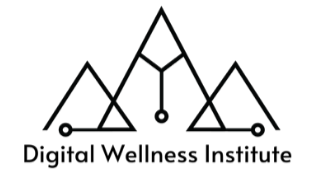Your Workplace Culture Score
Between 0-8
What this score suggests
- Employees feel burned out at the end of their workday always or often. The workplace leaves them feeling like they must be "always on" or constantly connected to work email after traditional business hours.
Why it matters
- Workplaces that have this score are at risk of burning out their employees and having employees who are looking for greener pastures. Workplaces that are looking to higher younger talent will have a particularly hard time doing so, as younger workers are looking for a culture that provides a healthy work-life-balance. As a result, churn is likely to be high and workplaces are likely to suffer efficiency losses as time and money is spent hiring and onboarding new talent instead of retaining.
What to do about it
- A good score in the Culture section is not about having a culture that's all fun and games. Instead, it's about working with boundaries to afford employees an opportunity to rest and recharge so they may be ready to come to work as their healthiest, most productive selves. Having a culture that helps employees find the sweet spot between productivity and thriving is simply good business. In order to take the first step in changing workplace culture, leaders must be tuned-in to metrics that show employee disengagement, dissatisfaction, and burnout. Encourage your workplace purchase the full version of the Workplace Index to unlock key metrics and insights that prove the value lost when the workplace digital culture is poor. Then, kick-off the topic of conversation in your workplace by bringing in a Certified Digital Wellness Educator.
Between 9-16
What this score suggests
- Employees sometimes feel burned out at the end of their workday. While the workplace does not always leave them feeling like they must be "always on" or constantly connected to work email after traditional business hours, it still is perhaps more common than they would like.
Why it matters
- Workplaces that have this score reflect the majority in parts of the world that prioritize the "work" in "work-life-balance." While it may be the norm in their country or industry, the reality is that this workplace is likely losing talent in the midst of the Great Resignation. Moreover, the mental and behavioral health claims of their employees are likely to be greater than industry peers with stronger culture scores. As a result, their employees skew older as the younger generation wants a culture that helps them find the sweet spot between productivity and thriving.
What to do about it
- While your workplace is considered to be average in this category, it's likely missing an important business opportunity by leaving employees to feel overconnected, overwhelmed, and overanxious. Excelling in this category means finding ways to cultivate a healthier digital culture within the workplace to allow employees an opportunity to rest, recharge, and return to work as their most productive and creative selves. To take the next step, explore our consulting initiatives designed to improve culture from the top down. Then, change workplace culture from the bottom up by adding employee e-learnings to further engrain digital wellness into the workplace culture.
Between 17-20
What this score suggests
- Employees rarely feel burned out at the end of the workday. Instead, they feel they have a culture that allows them to maximize productive working hours, while being able to complete turn off to recharge during non-working hours.
Why it matters
- Workplaces that have this score are excelling in the field. This type of workplace is desirable in the digital era, especially as more employees than ever are looking to their employers for guidance in navigating work and life in the digital age. All told, workplaces that fall in this category often have a culture of digital wellbeing, where employees are more productive, more fulfilled, and more empowered to find the sweet spot between productivity and thriving in the digital era.
What to do about it
- Your workplace seems to be a leader in regard to the digital wellness culture offered to employees. Celebrate that and share it with others by earning a marketable designation as a Certified Digitally Well Workplace. Get started by purchasing the full version of the index for your extended team or company. If your workplace scores high enough yours has the chance to join a small but growing list and earn recognition for the work you're leading.
